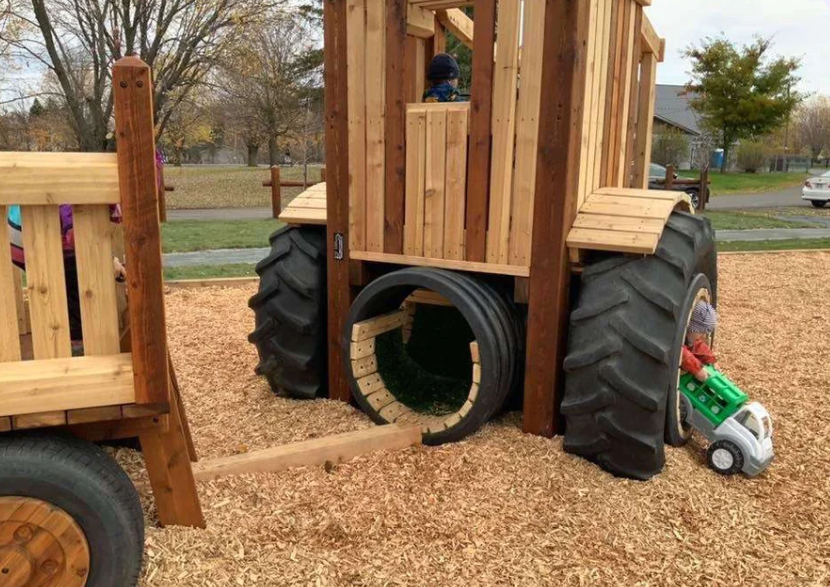Natural wood playgrounds are ideal spaces for children’s play and development, offering benefits for both the well-being and the environment, as they are spaces full of laughter and fun where children can develop motor, social, and emotional skills. Using 100% native and local wood materials to construct these playgrounds is an intelligent and responsible decision since it allows us to create safe, stimulating, and sustainable environments.
By choosing wood, we encourage children’s connection with nature and their integral development and contribute to the care of the planet; therefore, in this article, we will learn about the importance of using 100% native and local wood in the creation of playgrounds, focusing on the benefits for the children and the environment.
Connection with nature
Natural wood playgrounds offer children a unique visual and tactile experience since wood is a warm, tactile material that conveys a sense of calm and tranquility. By using native wood in the construction of the playgrounds, a direct connection to the local natural environment is created, allowing children to develop a greater appreciation for the beauty of nature and fostering their bond with the environment.
Benefits for children’s development
Wood is a versatile material that allows the creation of games and structures adapted to children’s development. Natural wood playgrounds offer games that stimulate imagination, balance, coordination, and problem-solving. In addition, being a more resistant material than others, it encourages children’s confidence and safety when using them. This contributes to the development of physical and cognitive skills in a natural and fun way.
Positive impact on the environment
Using 100% native and local wood in the construction of playgrounds is an environmentally friendly and sustainable choice. First, wood is a renewable resource, as trees can be replanted and harvested. Using local wood reduces the carbon footprint by avoiding long-distance transportation and reducing greenhouse gas emissions. In addition, the wood is biodegradable and can be recycled or reused at the end of its useful life, thus minimizing environmental impact.
Strength and durability
100% native and local wood is a stable and durable option for playground construction. The local wood is better adapted to the climatic and environmental conditions of the area, which translates into more excellent resistance to weather, moisture, and insects. This reduces the need for frequent maintenance and repairs, reducing long-term costs.
Boosting the local economy
Using native and local wood in playground construction promotes the local economy and supports local producers and suppliers. This fosters economic growth and job creation in the community, contributing to the region’s sustainable development, which not only brings benefits to the children and the community but also to local businesses, workers, and farmers.
What did you think of this topic? Do you want to know more about natural wood playgrounds?
If you want a Wooden Playground for your project, community, school, or public park, contact us by visiting the following link.
